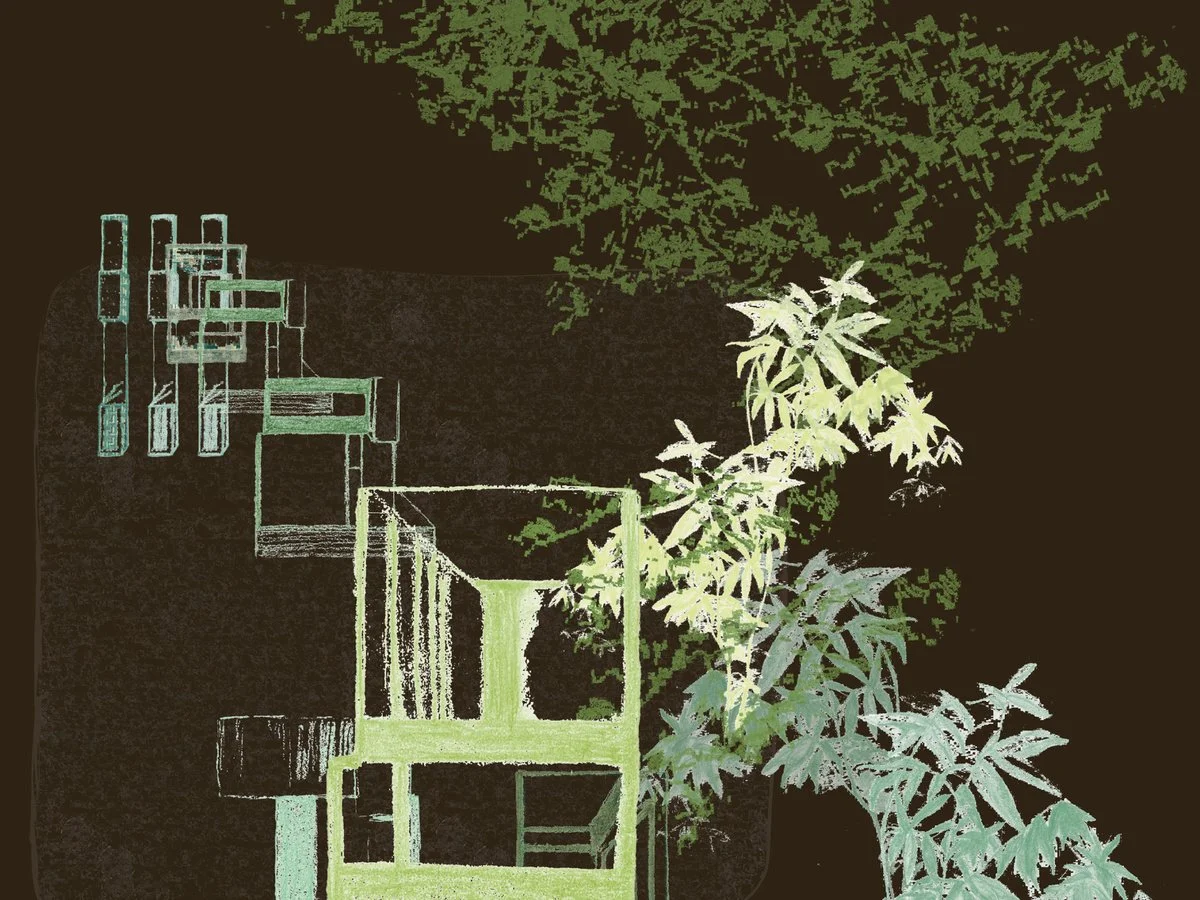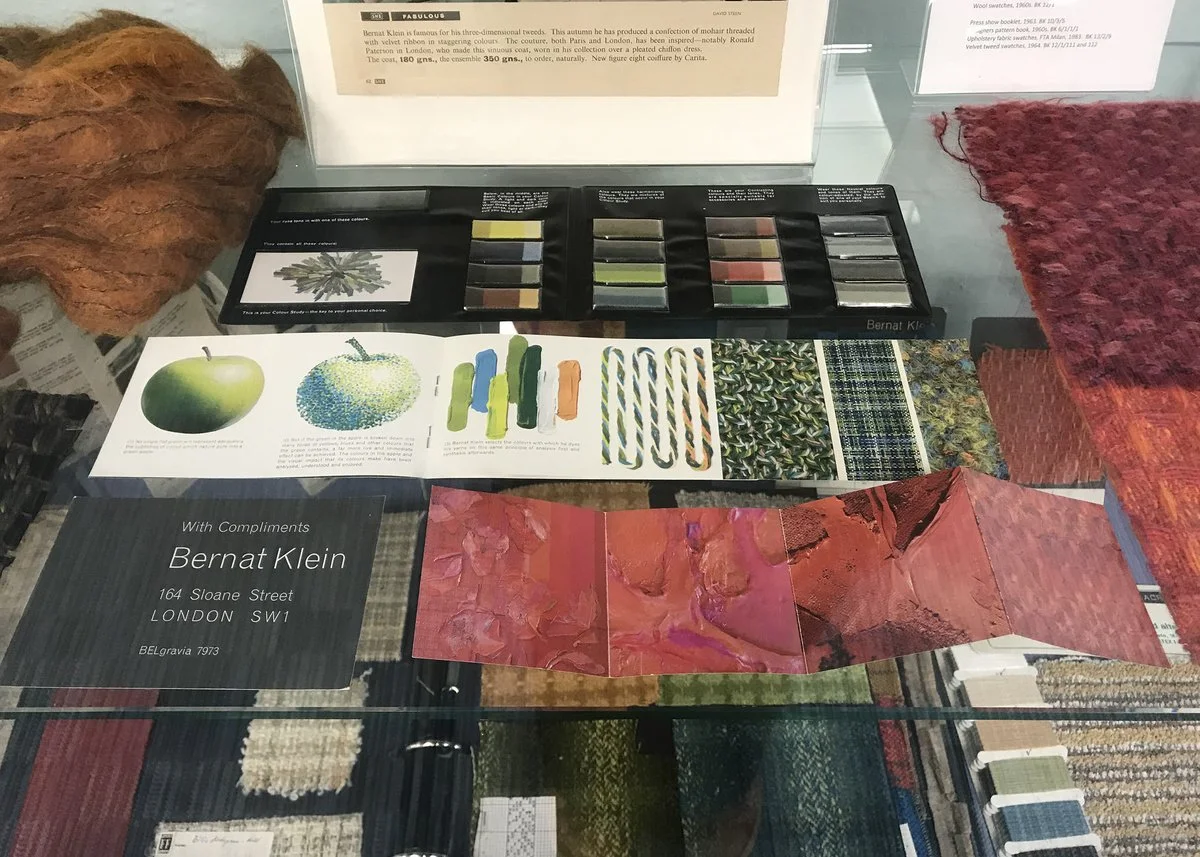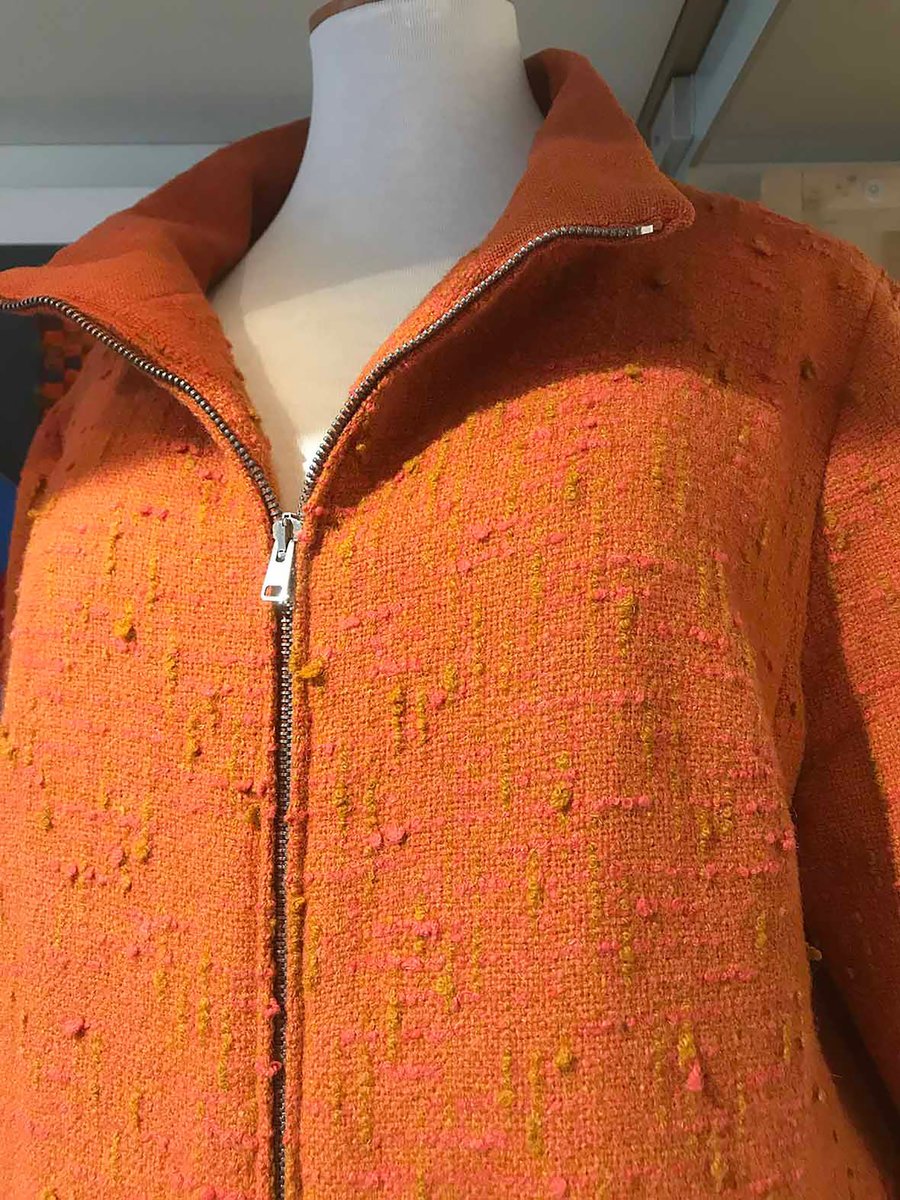2021 Bernat Klein Foundation Award
Emma McLellan
An interview with award winner Emma McLellan who is studying for a BA (Hons) in Design for Textiles at the School of Textiles and Design, Heriot-Watt University, Scottish Borders Campus.
Emma has become increasingly interested in maintaining textile heritage, and her work aligns with the initiative, ‘Sustainable Fashion Scotland,’ which seeks to promote a circular economy where clothes and textiles are treasured, as opposed to being thrown away.
Alison Harley:
What was your Inspiration for the Bernat Klein Project?
Emma McLellan: had known about Bernat Klein for several years, initially coming across him when I used to drive by his studio near Selkirk. I would glimpse this amazing modernist structure, partially hidden by beautiful mature trees, as I drove by. I then spent a wonderful day exploring it on a ‘Doors Open’ event in 2016. But this was poignant too, because the studio was (and still is) in such disrepair. I used the photos that I took that day, as part of my portfolio for my application to Heriot-Watt University, for the Design for Textiles Degree. It therefore seemed a natural development that I use the studio, and my response to it, as inspiration for the Bernat Klein Project.
What especially did you responded to in Bernat Klein’s work?
Our given themes were ‘Colour, Texture and Destination,’ and Bernat Klein’s colour legacy is an immediate inspiration.
Jennifer Mellor in her interview for the Bernat Klein Foundation, referred to the impact of the shops, with walls of colour. (click on 'Jennifer Mellor' to listen to the interview: Brian Wilson and Jennifer Mellor)
Bernat’s colour systems and theory were also clearly exceptional, so I knew that colour had to be an important feature.
Texture seemed a little bit more difficult to grasp, especially given that the project was largely digital. However, mohair and silk velvet were of immediate significance given Bernat’s groundbreaking designs in tweed, and in technical aspects of production such as innovative space dyeing of yarn, and brushing mohair yarn before weaving with it.
Bernat Klein’s Design and Colour Systems, Heriot-Watt University Library, Scottish Borders, The Textile Collection, HWU
Bernat Klein Archive Collection, Borders Textile Towerhouse, Hawick
Destination was the most difficult theme to address, but the interview with Bernat Klein and Alison Harley was very informative for me, especially when Bernat was asked about what work he was most proud of. He seemed to get very emotional when he said that it was his work in Scandinavia, a place perhaps more sympathetic to modernist design.
I wondered whether Bernat felt he didn’t quite fit in, in the Borders, a theme also alluded to by John Mackenzie in his interview. (click on 'John MacKenzie' to listen to the interview: John MacKenzie)
This also made me reflect on Bernat’s status as an emigre, and the tragedy for his family, as with many people of Jewish heritage during the Second World War. The themes of having a sense of belonging, versus being an outsider, and the importance of having a safe home and safety for family, were very potent. The phrase by Shelly Klein in her book 'The See-Through House' - “My father was the house, the house was my father,” perhaps encapsulated this.
I love the ‘Klein Studio.’ I had spent a few wonderful hours on that warm September ‘Doors Open Day,’ talking to other people with a love for the studio. It was perfect. I had gone from viewing from the outside, to then being inside the studio, looking in, and looking out.
The Bernat Klein Studio, Emma McLellan, 2016
Observing from afar, and catching some moments within, seemed to parallel the sense of yearning we can feel if we do not belong. Windows and other architectural elements of the studio, therefore became a key design direction. I explored these as repeated elements, layering them to form prints and chequered weaves.
Early ideas and colour studies for woven textiles, Emma McLellan
Elements - abstracted, re-arranged, re-iterated into grids, and ‘systems,’ became another key theme from Bernat Klein’s work. The ‘Lichen’ work resonated particularly, from the portrayal of colour, the light, the family story behind it, and how Bernat Klein later abstracted it. To this day I still cannot make out how he painted Lichen 1 so beautifully.
During my lockdown walks, I often took photos of natural elements that inspired me, and tried to emulate Bernat Klein’s approach to design process.
The forest floor and an early interpretation for woven textiles, Emma McLellan
I saw ‘Witches Butter’ tree fungus, stand out like an orange beacon, rich, brown shades of larch pine needles, criss-crossed on a forest floor, and the brightest emerald moss on logs. To abstract these I made paper weaves with sketched, painted and photographed elements, and then abstracted these further into print ‘mosaics,’ and hopsack weave.
Paper weaves with sketched, painted and photographed elements, Emma McLellan
What did you discover about Bernat Klein?
Before this project I knew that Bernat Klein was a talented designer who had produced work for Chanel, and other couture houses. By engaging in this project I now know that Bernat Klein was a visionary and a genius, and is very much under-acknowledged as a designer.
In my reading I learned that Bernat Klein had attended art college, with lecturers from the Bauhaus. This of course makes sense when viewing Bernat’s work as a whole, with his attention to all detail, from the fundamentals of colour, line, space and form, to the layout of colour ‘systems’.
Bernat Klein colour system boards and space-dyed mohair yarn, The National Museum of Scotland
Handspun yarn following Bernat Klein’s space-dyeing technique, Emma McLellan
Bernat Klein encouraged democratic access to design through mail order sales of his knitted and woven textiles in 'ready to sew' sets and presented in hat boxes. His use of clean lines as well as a modernist approach to his promotion and advertising also included his careful choice of typography (sans serif) for Bernat Klein Ltd.
The Bauhaus philosophy and method of teaching design, meant that Bernat Klein could design beautifully - print, weave, knitwear, upholstery, advertising and graphic design - as well as create beautiful visual art. Throughout his career as a textile designer, he promoted the need for aesthetically designed living and working environments, as well as making inspirational changes in his innovations in the processing and manufacture of textiles.
2022 Bernat Klein Award
The judging panel included Kestin Hare of 'KESTIN' and Head Designer, Tom Cuddihy.
“Emma's work had the strongest starting point - and was fluid and on-trend in her making of hand embellishments and in her suggestions of tapestry - we loved how organic it was and thought it was the most commercially applicable.”
Kestin Hare, May, 2021















